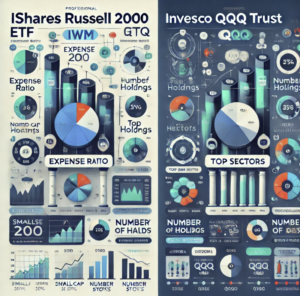
By ATGL
Updated July 28, 2024
In the fast-paced world of foreign exchange, one strategy emerges with the allure of quick profits: Forex Scalping. This intricate dance on the market floor pivots on the axis of seconds and pips. Beginners and trading veterans alike often wonder about the viability of such a high-speed approach to trading. This article serves as a guide to understanding and implementing a Forex Scalping Strategy, with a focus on essential indicators and practical tips to enhance trading performance. We will navigate through the principles of Forex Scalping, examine its profitability, and dissect various time-framed strategies designed for those who dare to ride the lightning-quick waves of the Forex market. Let’s embark on this journey to master the scalping techniques that could potentially transform your trading experience.
What Is Forex Scalping?
Forex scalping is a trading strategy centered around making multiple small profit gains, typically between 5 to 20 pips, on minor price changes in the forex market. Scalpers aim to capitalize on short-term market movements by entering and exiting trades within minutes or even seconds. This approach requires focused attention and quick decision-making to manage the rapid trades.
In forex scalping, leverage trading is often employed, which allows traders to control large positions with relatively small capital by borrowing from brokers. This increases the potential for both profit and loss. Unlike traditional trading methods, forex price action scalping eschews technical indicators and relies purely on the analysis of raw price charts to make trading decisions.
Due to its high-speed nature, scalping involves a considerable number of transactions within a single trading day. A scalper’s success hinges on their ability to quickly absorb minimal price shifts, accumulating profits over the course of many trades. Speed and precision are critical, making forex scalping a demanding yet potentially rewarding trading style.
Is Scalping Forex Profitable?
Forex scalping stands out as a short-term trading strategy where traders aim to gain from small fluctuations in currency prices. Is it profitable? The answer hinges on the trader’s swiftness and their ability to swiftly adapt to market changes. Traders who excel at forex scalping are those that can maintain high levels of discipline, have well-defined trading tactics, and remain glued to the market to identify fleeting opportunities.
Is Scalping Forex Profitable?
Key Considerations:
- Discipline: A successful scalper must adhere to strict entry and exit rules to maximize profits and minimize losses.
- Planning: Detailed strategies are required to understand when to enter and exit trades.
- Market Watch: Constant vigilance is needed to spot the brief windows of trading opportunities.
Profitability Factors:
- Speed of Execution: A trader’s ability to quickly execute trades is crucial in seizing the fleeting profitable moments.
- Changing Market Conditions: The scalper must be flexible and respond promptly to market shifts that could affect trade outcomes.
- Goals & Strategies: Clear objectives set the roadmap for trading, helping the scalper to consistently make informed decisions.
In conclusion, while forex scalping can indeed be profitable, it is not without risk and demands a significant investment of time, focus, and strategy.
Key Indicators for Scalping in Forex
Forex scalping is a trading strategy aimed at profiting from minor price changes in the forex market. Scalpers aim to enter and exit trades quickly, capitalizing on market volatility during a short period of time. Effective scalping requires precise indicators that facilitate rapid decision-making.
Moving Averages, including the Simple Moving Average (SMA) and Exponential Moving Average (EMA), are foundational for determining trend directions. The 9 and 30 EMA strategy is particularly favored among scalpers for identifying optimal entry and exit points through short-term trends.
Bollinger Bands are another vital scalping tool. They gauge market volatility by pairing a Simple Moving Average with standard deviation measures. These bands assist traders in visualizing the overbought and oversold conditions in the market on a price chart.
The Stochastic Oscillator, often deployed by day traders, provides insights into market momentum. It does so by comparing the current price of a currency pair to its range of closing prices over a specific time frame. This can signal when the currency is experiencing extreme conditions, which is helpful for scalping strategies.
In conclusion, key indicators for scalping in forex include:
- Simple Moving Average (SMA)
- Exponential Moving Average (EMA)
- Bollinger Bands
- Stochastic Oscillator
Scalpers utilize these technical tools for efficient and effective trading within the financial markets.
Exploring Different Forex Trading Scalping Strategies
Success in forex trading scalping strategies hinges on the ability to conduct frequent trades with precision. Scalpers aim for modest gains during the most liquid times, employing meticulous technical analysis to determine points of entry and exit. To optimize forex scalping strategies, they must be adapted to market conditions. This requires multi-timeframe analysis, which helps ascertain the nature of price action—be it trending, ranging, or on the cusp of a breakout.
Careful selection of currency pairs is central to forex scalping. Pairs that are exotic or less volatile, such as those from emerging markets, may be less appealing due to factors like low liquidity, wider spreads, and more sluggish movements. Conversely, pairs that are more volatile can be more favorable for scalping, providing faster results and requiring a shorter wait to realize profits.
Forex scalping demands keen attention and emotional stability. The rapid-fire nature of this strategy provides a rigorous environment, honing skills such as focus, quick reaction times, and managing slippage issues effectively.
One-Minute Scalping Strategy
The one-minute scalping strategy is designed for those who thrive in a short-term trading environment. It focuses on siphoning numerous small gains and requires the trader’s decisive actions within very limited timeframes. Fundamentally, this strategy does not call for extensive fundamental and technical analysis but instead relies on the acuity of moving averages and vigilant observation of price corrections.
Given its nature, the one-minute scalping strategy often dovetails well with Electronic Communication Network (ECN) accounts, which offer minimal spreads and are conducive to small, frequent profits. The strategy’s success is dependent on a trader’s ability to promptly close trades once a price reversal occurs, and the adaptability to tweak strategies under varying market conditions.
Five-Minute Scalping Strategy
An incremental step from the one-minute method, the five-minute scalping strategy aims to secure 10-20 pips per trade and often maintains a risk-to-reward ratio of 1:4—this makes it an attractive option for traders who are starting out. Traders engaging in this method typically perform transactions on major currency pairs such as EUR/USD, USD/JPY, or GBP/USD, capitalizing on modest price changes through tighter spreads.
When implementing the five-minute strategy, the optimal chart timeframes range from 1 to 15 minutes—predominantly set to M1, M5, or M15 intervals. The strategy’s efficacy is pronounced in active sessions like those of London, New York, or during the overlap with Indian market hours—times characterized by their dynamic and volatile nature.
15-Minute Scalping Strategy
Positioned between the immediate pace of the one-minute and the broader scope of longer-term strategies, the 15-minute scalping strategy offers a compromise. With this strategy, trades revolve around discerning short-term price movements within a quarter-hourly segment.
Forex scalpers utilizing this approach operate under the premise that modest, more frequent profits can be gleaned by keenly monitoring price movements shown on a 15-minute chart. This approach requires attentiveness and the capacity to execute numerous trades within the designated time frame, aligning with a strategy that seeks smaller gains at an elevated frequency.
Tips on How To Scalp Forex Effectively
Forex scalping is a trading strategy that emphasizes making a large number of trades to generate small and frequent profits. To succeed in forex scalping, it is imperative to dive into the bustling world of currency exchange with a keen eye for fleeting profit opportunities. Here are some tips to help traders scalp the forex market more effectively:
- Frequency is Key: Successful scalpers often engage in frequent trades throughout the day, which requires continuous attention and a willingness to act quickly on market movements.
- Peak liquidity times: To capitalize on the small gains scalping aims for, it’s optimal to trade during times when the forex market is most liquid.
- Technical Analysis: Employ technical analysis to determine precise entry and exit points. Intimately understanding price charts and technical indicators is crucial for identifying rapid price movements.
- Multiple-Timeframe Analysis: Before opening positions, utilize a multiple-timeframe analysis to grasp the big picture of market trends and price action, ensuring that the timing of your scalping is in sync with overall market movements.
- Market Conditions: The forex market can exhibit trending, ranging, or breakout conditions, each requiring tailored scalping approaches. Recognize and adapt your strategy to the current market state. Use Forex heatmaps for instant visual summary of currency strengths and weakness.
- Constant Vigilance: Scalping in forex is an active trading style that demands that you remain glued to market dynamics over your trading period to pounce on profit opportunities as they arise.
- Risk Management: Given the smaller profit margins and the potential use of higher leverage, robust forex risk management practices are pivotal. Keep your risk per trade low, and never overlook the importance of Stop-Loss and Take-Profit orders.
Choosing the Best Time Frame for Scalping
The journey of finding the best time frame for Forex scalping is an individual quest, dependent on a trader’s quick-wittedness and trading preferences. Most traders gravitate toward:
- 1-Minute (M1) Time Frame: The brisk 1-minute chart is a scalper’s playground where a target of around 5 pips per trade is common. This time frame suits traders who can make rapid-fire decisions and manage the sheer intensity of the action.
- 5-Minute (M5) Time Frame: Offering a slight reprieve from the fast-paced 1-minute trend, traders on a 5-minute chart aim for approximately 10 pips per trade. This time frame adjusts speed with analysis, allowing for more in-depth examination without significantly reducing trade frequency.
- 15-Minute (M15) Time Frame: Though it offers more room for technical assessment, the 15-minute chart is generally less favored due to its reduced ability to provide quick-trade opportunities compared to its faster counterparts.
- Active Trading Sessions: Scalping opportunities are at their peak during the London and New York sessions, and particularly in their overlap, when volatility rises, spinning a web of potential rapid gains for keen-eyed traders.
Tip: Trade during high volatility periods to maximize trading dynamics and chances for quick gains.
Methods for Executing Scalp Trades
Forex scalping requires traders to make rapid, accurate decisions, often entering and exiting trades within minutes. To execute scalp trades effectively, several methods and technical indicators are crucial. Key among them are moving averages, which help to gauge market trends and signal potential entry and exit points. Moving averages can smooth out price fluctuations, providing a clearer view of the direction in which the currency pair is moving over a specific period of time.
Another vital tool is the Bollinger Bands, which consist of a set of three lines: the moving average in the middle, with an upper and a lower band. These bands expand and contract based on the volatility of the market. Scalpers look for moments when the price touches or breaches the bands to identify overbought or oversold conditions, thus guiding their trading decisions.
Technical indicators such as the Relative Strength Index (RSI) and the Moving Average Convergence Divergence (MACD) are also used to pinpoint optimal trade moments. RSI helps in identifying overbought or oversold market conditions while MACD is utilized to spot changes in price momentum and direction.
In summary, successful scalping depends on:
- Moving averages for trend analysis.
- Bollinger Bands to identify market volatility.
- RSI and MACD for timing trades.
Each technical indicator has its unique strengths, and savvy scalpers routinely combine them to bolster the precision of their trading decisions. Remember, the prompt and exact identification of opening and closing points is not just preferable but essential in maintaining the efficacy of a scalping strategy. Traders must employ these technical indicators swiftly to capitalize on fleeting market opportunities.
Learn To Master Trading Strategies With Above the Green Line
Forex trading can indeed be an intense financial arena, with traders constantly seeking effective strategies to maximize gains while minimizing risks. Among the numerous approaches is the “Above the Green Line” trading strategy, which relies on a set of color-coded lines on the price chart to guide entry and exit signals.
At its core, this technique focuses on the candlesticks’ position relative to the green line. Traders commit to a trade if price action remains below the red line for a predetermined number of bars, ensuring that they’re not just reacting to normal market fluctuations. As part of its rules, the strategy employs an orange line that serves as an alert for when to exit a trade to mitigate losses.
Moreover, the strategy advises traders to watch for additional lines that may signify a potential reversal—this helps in refining trade exit points and covering any spread costs. It is also prudent within this trading style to avoid committing to movements if the price has been stagnant or is not interacting with the designated lines, as this could indicate indecision in the market.
By mastering the “Above the Green Line” trading strategy’s guidelines, traders can enhance their trading performance through precise and systematic execution. Join ATGL today and become a better trader.






